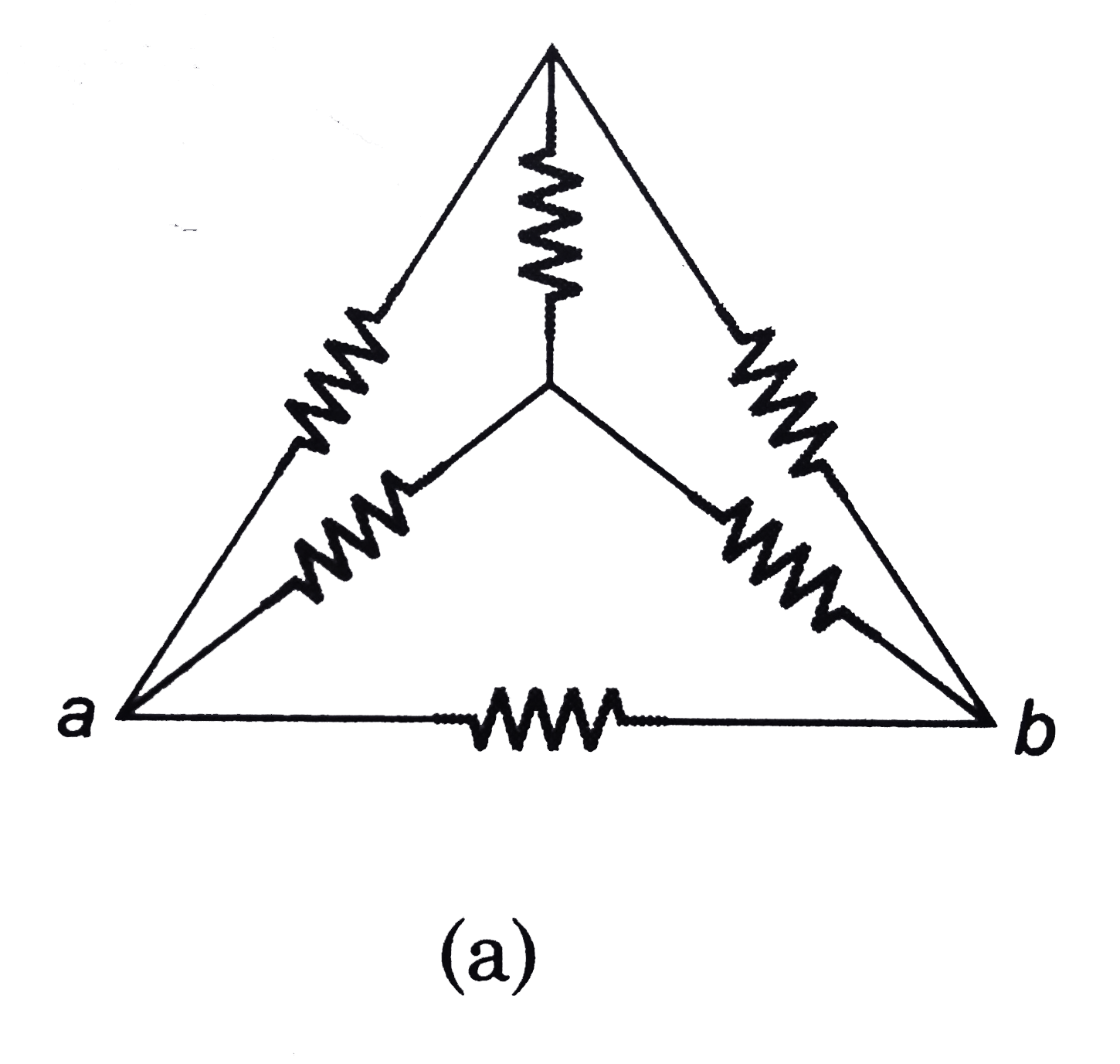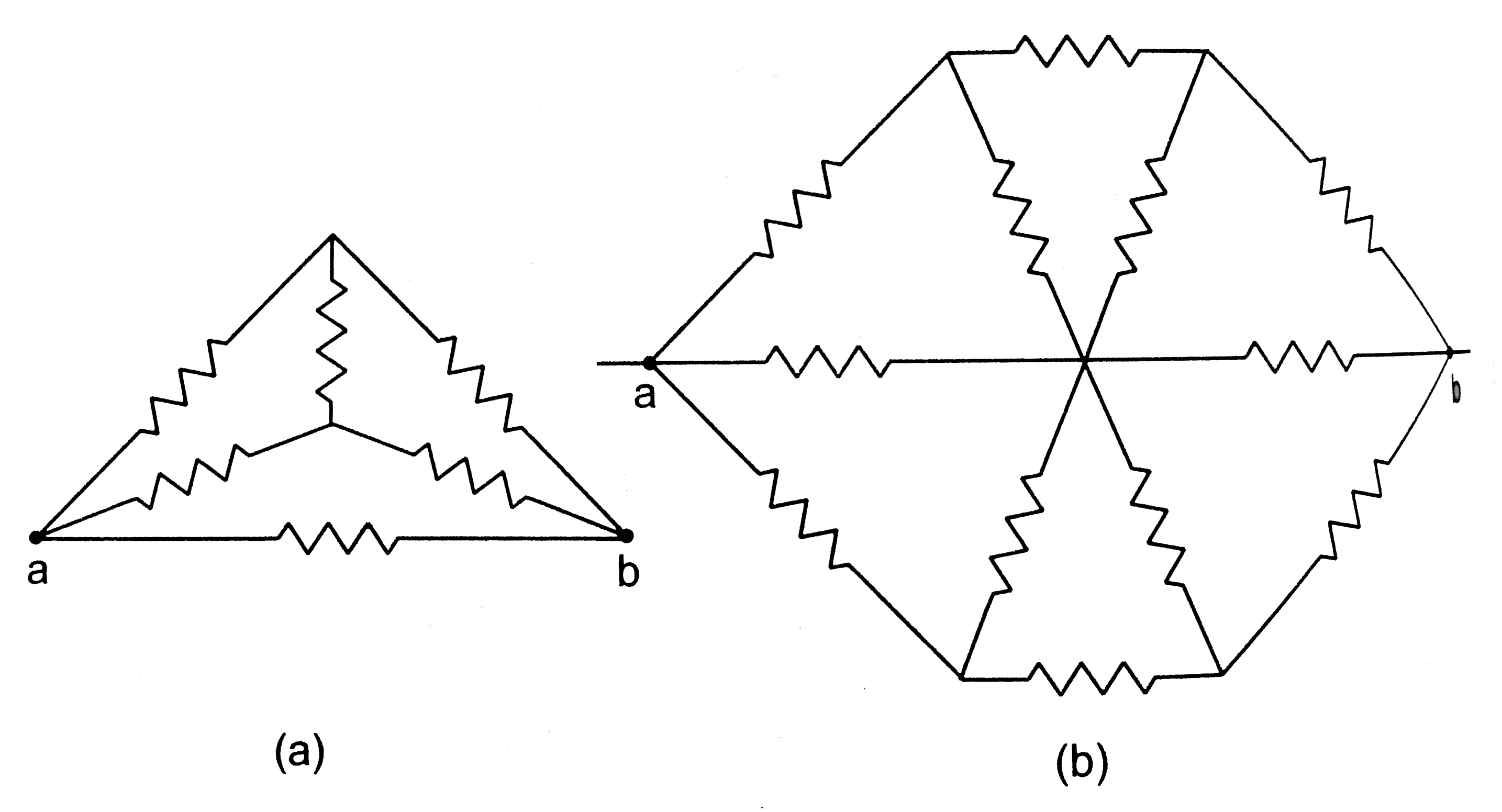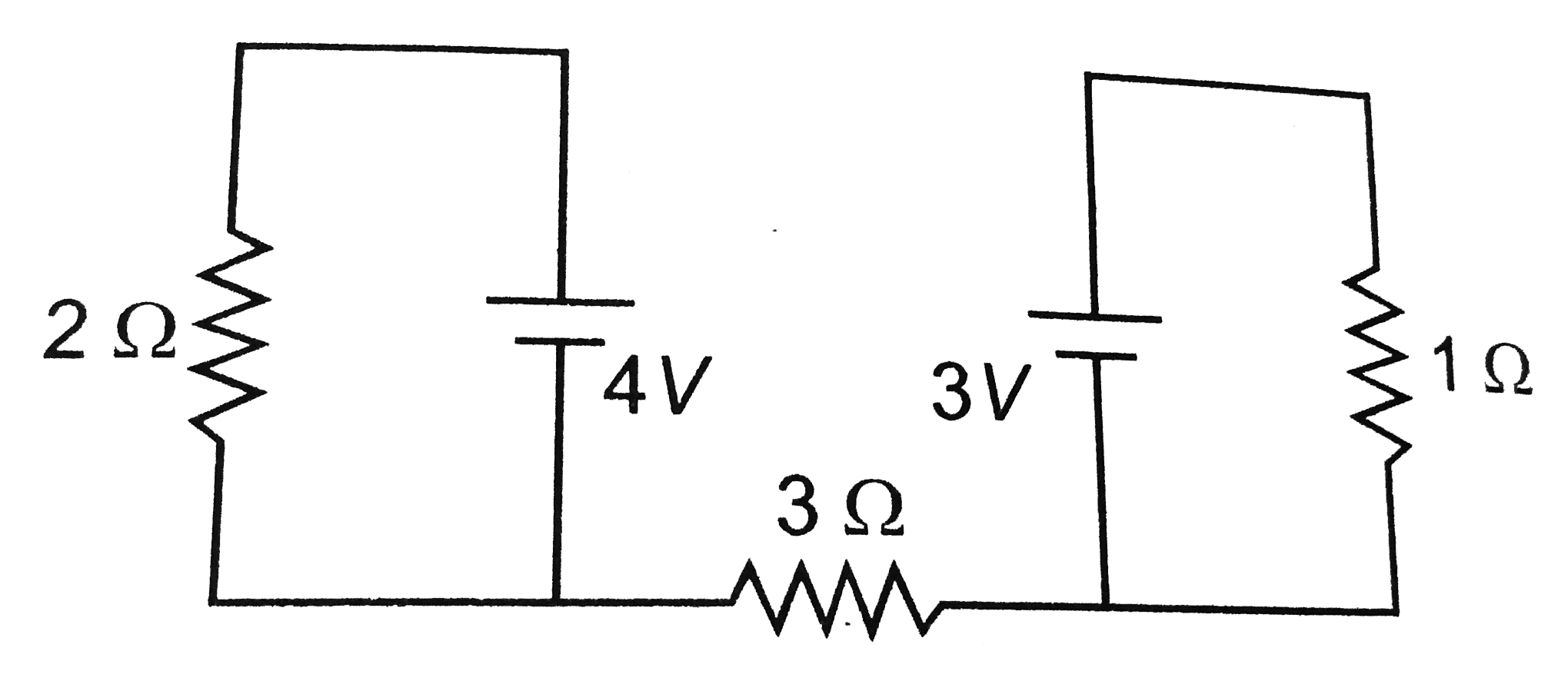A resistor circuit is constructed such that 12 resistor are arranged to form a cube as shown in fig. Each resistor has a resistance of The potential difference of 30V is applied across two of the opposing points as shown

If we replace resistor between A and B and resistors between G and H by wires of zero resistance, then the points having the same potential are
i. D,E,C,F ,ii. A,B ,iii. G,H
Only (i) is correct.
Only (ii) is correct.
Only (iii) is correct.
(i), (ii) and (iii) are correct.
The correct Answer is:D
D, B, and E are are symetrical
to A, hence potential at these
points is same. Similarly , C,
F, and H are symmetrical
to G. So potential at these
points is the same.

Resulting diagram will be
as shown : C, D, F, and E will
be at the same potential.
Potential difference between
C and G will be half to the applied potential, i.e.,
Topper's Solved these Questions
- BOOK - CENGAGE PHYSICSCHAPTER - ELECTRIC CURRENT AND CIRCUITEXERCISE - Interger8videos
ELECTRIC CURRENT AND CIRCUIT
- BOOK - CENGAGE PHYSICSCHAPTER - ELECTRIC CURRENT AND CIRCUITEXERCISE - Multiple Correct16videos
ELECTRIC CURRENT AND CIRCUIT
- BOOK - CENGAGE PHYSICSCHAPTER - ELECTRIC CURRENT & CIRCUITSEXERCISE - Kirchhoff s law and simple circuits15videos
ELECTRIC CURRENT & CIRCUITS
- BOOK - CENGAGE PHYSICSCHAPTER - ELECTRIC FLUX AND GAUSS LAWEXERCISE - MCQ s38videos
ELECTRIC FLUX AND GAUSS LAW
Similar Questions
Knowledge Check
- Question 1 - Select One
A resistor circuit is constructed such that 12 resistor are arranged to form a cube as shown in fig. Each resistor has a resistance of 2Ω. The potential difference of 30V is applied across two of the opposing points as shown

In question 20, the potential difference between the points C and G isA15VB10VC20VD7.5V - Question 2 - Select One
A resistor circuit is constructed such that 12 resistor are arranged to form a cube as shown in fig. Each resistor has a resistance of 2Ω. The potential difference of 30V is applied across two of the opposing points as shown

The points having the same potential are
i. B,D,E ,ii. C,F,H ,iii. C,EAOnly (i) is correct.B(i),(ii), and (iii) are correct.COnly (ii) is correct.D(i) and (ii) both are correct. - Question 3 - Select One
A 2-A current flows through a resistor when a potential difference of 20 V is applied across it. The resistance of the resistor is
A2ΩB1ΩC10ΩD20Ω
Two resistors of resistances 10Ω and 20Ω are joined in parallel. A potential difference of 12V is applied across the combination. Find the power consumed by each resistor.
View SolutionFind the equivalent resistance of the circuits shown in figure between the points a and b. Each resistor has a resistance r.

 View Solution
View SolutionFind the equivalent resistance of the circuit shown in figure between the points a and b.Each resistor has a resistances r.
 View Solution
View SolutionWhat is the potential difference across resistor in the given circuit ?
 View Solution
View SolutionNine resistors each of resistance R are connected in the circuit as shown in fig. The net resistance between A and B is
 View Solution
View Solution


